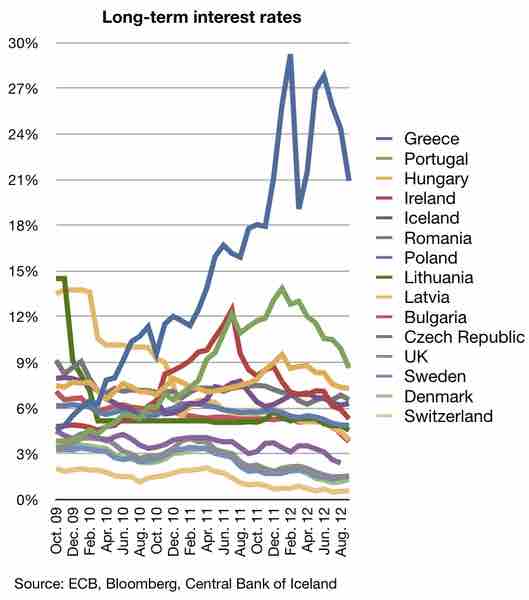Times Interest Earned Ratio
The Times Interest Earned Ratio indicates the ability of a company to meet its required interest payments , and is calculated as:

Long-Term Interest Rates
The Times Interest Earned Ratio is an indication of a company's overall financial health.
Times Interest Earned Ratio = Earnings before Interest and Taxes ( EBIT ) / Interest Expense .
Earnings before Interest and Taxes (EBIT) can be calculated by taking net income, as reported on a company's income statement, and adding back interest and taxes.
Analysts often use "Operating Income" as a proxy for EBIT when complex accounting situations, such as discontinued operations, changes in accounting principle, extraordinary items, etc., are reported in a company's financial statements. Analysts will sometimes use EBITDA instead of EBIT when calculating the Times Interest Earned Ratio. EBITDA can be calculated by adding back Depreciation and Amortization expenses to EBIT.
The Times Interest Earned Ratio is used by financial analysts to assess a company's ability to pay its required interest payments. The higher this ratio, or the more EBIT a company can produce relative to its required interest payments, the stronger the company's creditworthiness and overall financial health are considered to be.
For example, if Company X's EBIT is 500,000 and its required interest payments are 300,000, its Times Interest Earned Ratio would be 1.67. If Company A's EBIT is 750,000 and its required interest payments are 150,000, itsTimes Interest Earned Ratio would be 5. Comparing the respective Times Interest Earned Ratios would lead an analyst to believe that Company A is in a much better financial position because its EBIT covers its required interest payments 5 times, relative to Company X, whose EBIT only covers its required interest payments 1.67 times.
If a company's Times Interest Earned Ratio falls below 1, the company will have to fund its required interest payments with cash on hand or borrow more funds to cover the payments. Typically, a Times Interest Earned Ratio below 2.5 is considered a warning sign of financial distress.